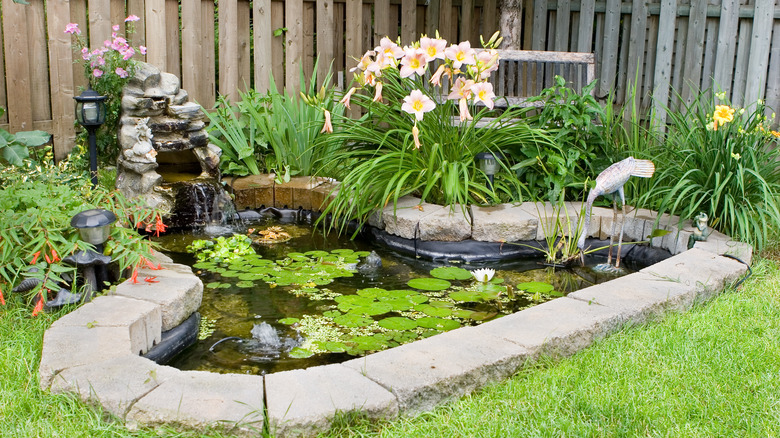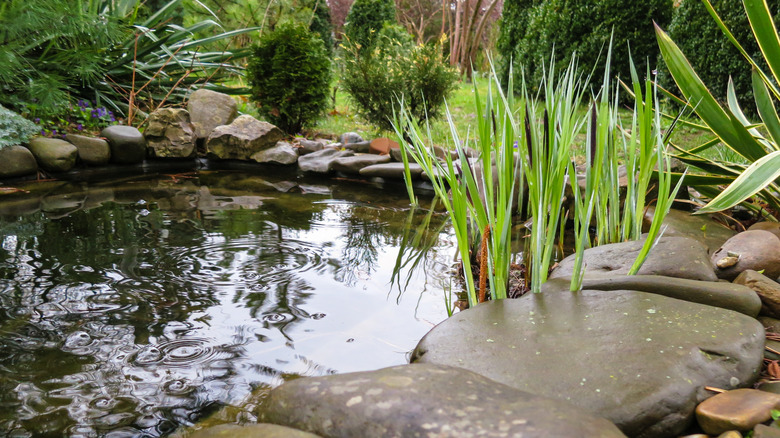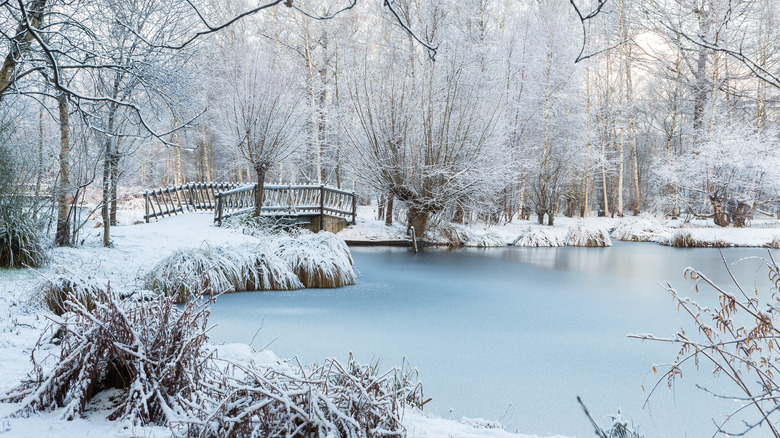Do You Really Need To Keep Your Pond Pump Running During The Winter?
Garden or koi ponds are a great addition to any habitable backyard or outdoor space. The flowing water and pond plants create a gorgeous, relaxing oasis, with Total Pond saying ponds are linked to mental and physical health benefits. Pond water can help purify the surrounding air, remove allergens and toxins, as well as help boost energy levels, reduce stress, and altogether promote a healthier, happier lifestyle.
That doesn't even cover the aesthetic appeal a well-maintained pond adds to your garden or the resale value it adds to your property. The key word there, though, is well-maintained. Harsh winter temperatures are a natural part of the weather cycle; your pond and any wildlife within know how to adapt to it naturally. Neglecting it entirely can lead to significant structural damage and wipe out your population of koi or other pond-dwelling animals. One slightly debatable winter pond care tip is whether or not to keep your pond pump running throughout the colder months. Keep reading to learn how to operate your pond in the winter season.
Keeping your fish's health in mind
The main concerns when it comes to keeping your pond pump on or off during winter are the integrity of the pump and the safety of your pond's fish and wildlife. Many people feel that moving water is ideal for fish, and while that sentiment is true, your pump shouldn't be the appliance doing that work. As The Pond Experts explain, streams and waterfalls created by pond pumps can cause ice dams to build up, leading to water going stagnant or draining.
Those in frigid climates also run the risk of their pumps freezing and cracking, which can be a costly replacement once temperatures warm back up. For this reason, Hoffman's Water X Scapes recommends removing your pump once the pond is consistently reading at 40 degrees Fahrenheit. Keep the pump submerged in water indoors in non-freezing temperatures. You can also remove and clean or dispose of filters, UV bulbs, and pond lighting.
Winterizing your pond
Unlike other water features like pools, the pump does not keep the water healthy and moving for ponds. Even artificial ponds have an instinct for staying healthy throughout harsh weather conditions — it's your job to help facilitate that natural process. The easiest way to do this is to keep a hole in your pond all winter. As The Pond Experts explain, this lets oxygen enter the pond, keeps the water healthy, and releases built-up carbon dioxide, which, if trapped under the ice all winter, could kill the plants and fish in your pond.
While you could poke a hole in the ice as needed, this is a bit of an impractical chore to include in your winter pond care routine. Instead, use a mixture of a pond de-icer or heater and an aerator. The de-icer does exactly what you would assume — removes ice from the pond with heat. The aerator produces a steady stream of bubbles (air) throughout the pond, keeping it from freezing over, which helps back up the work of your de-icer. This keeps your pond water healthy and moving all winter, not the pond pumps.


